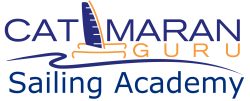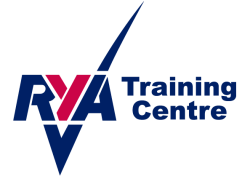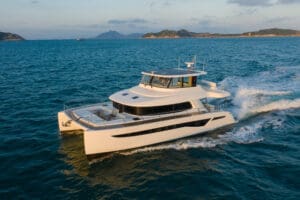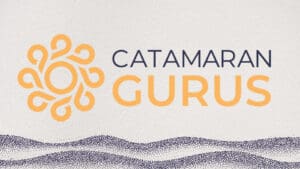Basic Coastal Cruising (ASA 103)
Prerequisites: Basic Keelboat Sailing certification
General Description: A certified student is able to cruise safely in local and regional waters as both skipper and crew on an auxiliary sailboat of about 20 to 30 feet in length, in moderate winds and sea conditions.
Sailing Knowledge
- Identify expanded parts inventory on larger sailboat and describe their functions.
- List all the federal equipment requirements and ASA recommended safety equipment for a medium size sailboat heading out on long cruises or into rough weather.
- Describe the most important reasons for keeping gear and equipment stowed in assigned places on a boat.
- Describe purpose and proper use of the safety equipment onboard, fueling and fire precautions.
- Describe internationally required navigation lights on boats between sunset and sunrise when under sail, under power, and at anchor. Apply Navigation Rules by means of diagram and practice.
- Interpret marine weather forecasts and weather changes applicable to the area and apply the information to the sailing plans for the next six hours and the entire day.
- Describe actions and precautions to be taken during times of reduced visibility.
- Describe the correct sail combinations to carry under various wind and sea conditions, including reefing.
- Read and interpret important information from the NOAA nautical chart of the local area, demonstrate basic navigation knowledge.
- Describe anchoring procedures, site selection, and dangers of a lee shore.
- Describe the immediate action to be taken during various emergencies.
- Identify the main responsibilities of the skipper and crew.
- Describe one commonly accepted use for each of the 6 basic sailor’s knots.
Sailing Skills
- Demonstrate on land the correct method of putting on a personal flotation device in the water and proper usage of safety equipment.
- Carry out a check of the vessel’s gear and equipment. Demonstrate the use and care of domestic equipment, including winch techniques.
- Start an auxiliary engine and outboard motor observing commonly accepted safety practices. Stop engine & secure it for the night.
- Handle the boat under power, understand vessel’s momentum, maneuver to a position not more than two feet alongside and parallel to a dock with a full stop.
- Demonstrate a skipper’s actions/commands while under power from the time a member of the crew falls overboard without warning until the crew is safely recovered. A float will be used for this exercise.
- Select anchorage, securely set anchor, check for holding and weigh anchor/get underway under power.
- Sail an ordered compass course for 5 minutes without varying more than 10 degrees from the ordered heading.
- Function as helmsman and crew giving correct commands and proper responses while demonstrating the proper techniques on all points of sail, tacking and jibing.
- Describe proper preparatory commands and commands of execution for all sailing skills included in this standard, including reefing/heaving to, person overboard maneuver while executed under sails.
- Secure a boat to various dock configurations so as to provide limited movement and set out fenders correctly.
- Take extra precautions and secure a vessel for the night at a dock and at a mooring.
- Tie 7 basic sailing knots within shorter time limits than ASA 101 standard.
Sail With Us to Learn


Week-Long Liveaboard Courses
Rare RYA Classes & Certifications
Catamaran Guru’s real-life practical methods combined with up-to-date sailing theory in lessons aboard recent model catamarans…or your own boat!
Prepare for certifications or take the first step aboard to embark on your dream life of boat ownership or cruising
Classes in S Florida and the Bahamas.

Estelle Cockcroft
Catamaran Guru Co-Founder
Estelle Cockcroft is a seasoned sailor, catamaran expert, and co-founder of Catamaran Guru. With over 70,000 NM sailed and 30+ years aboard, she empowers new cruisers with expert advice on liveaboard life, yacht ownership, and ocean adventures.




